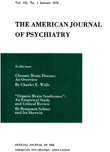Implicit messages concerning menstruation in commercial educational materials prepared for young adolescent girls
Abstract
Interviews with young girls aged 9 to 18 revealed that commercial educational materials are an important source of information about menstruation. Although these materials are valuable educational supplements, they do not provide a complete, accurate, and realistic description of menarcheal changes and emphasize good hygiene rather than dealing with the young girl's emotional needs and anxieties. The authors stress the need for more research into the physiological, cognitive, and psychological changes during puberty and the obligation of parents, schools, and other social institutions to provide more comprehensive information to the maturing girl about the essential issues of pubertal development.
Access content
To read the fulltext, please use one of the options below to sign in or purchase access.- Personal login
- Institutional Login
- Sign in via OpenAthens
- Register for access
-
Please login/register if you wish to pair your device and check access availability.
Not a subscriber?
PsychiatryOnline subscription options offer access to the DSM-5 library, books, journals, CME, and patient resources. This all-in-one virtual library provides psychiatrists and mental health professionals with key resources for diagnosis, treatment, research, and professional development.
Need more help? PsychiatryOnline Customer Service may be reached by emailing [email protected] or by calling 800-368-5777 (in the U.S.) or 703-907-7322 (outside the U.S.).



